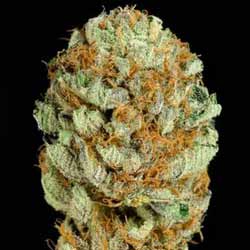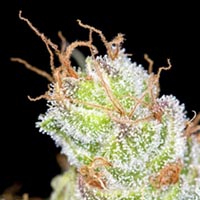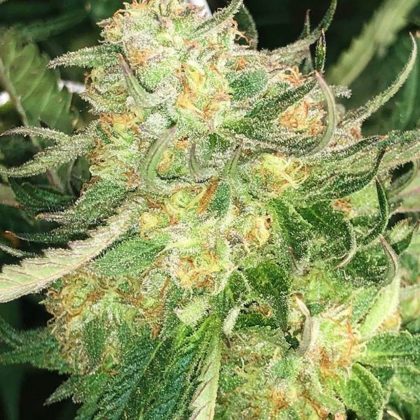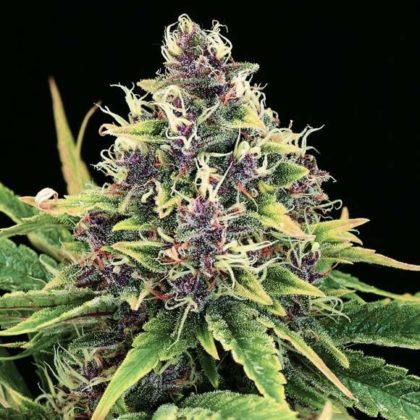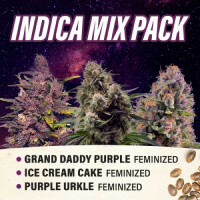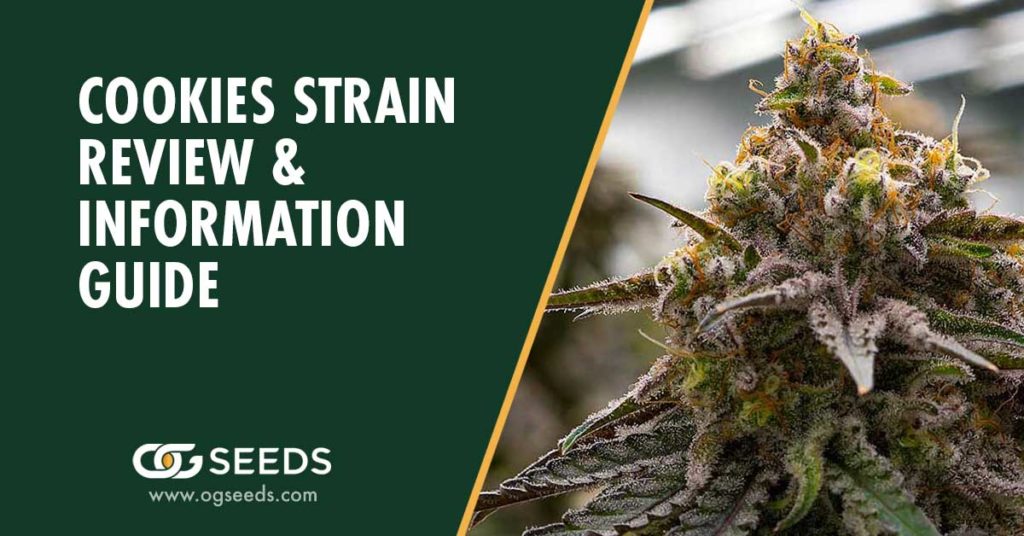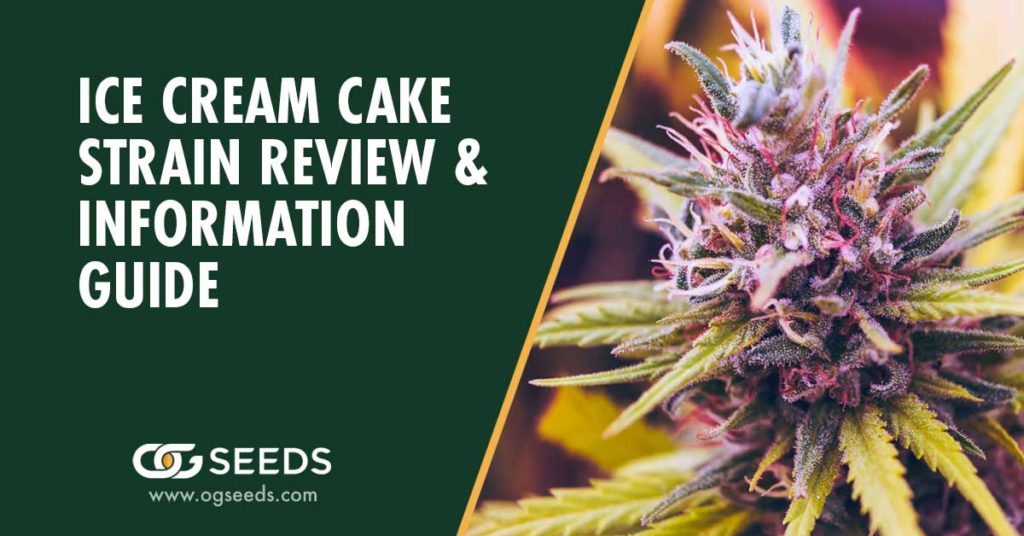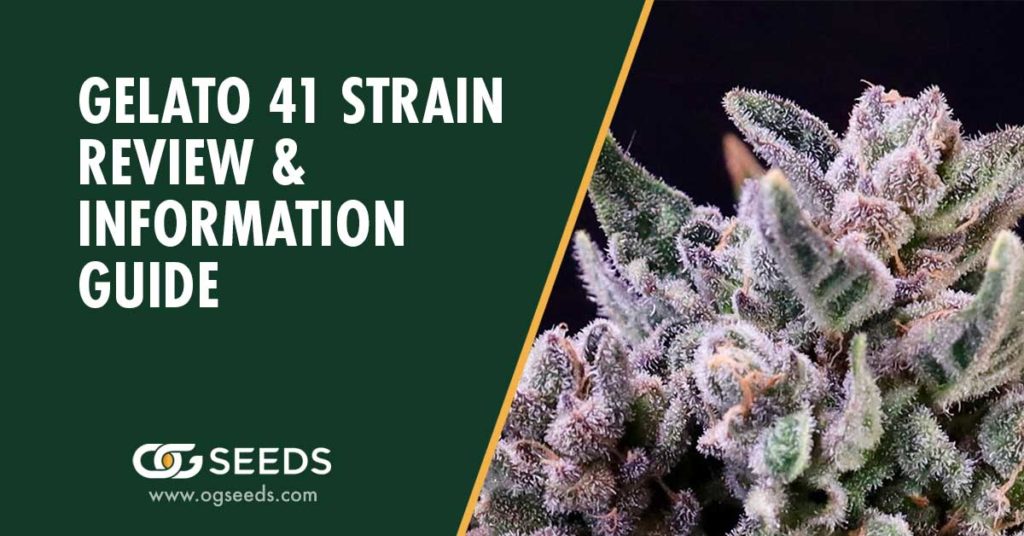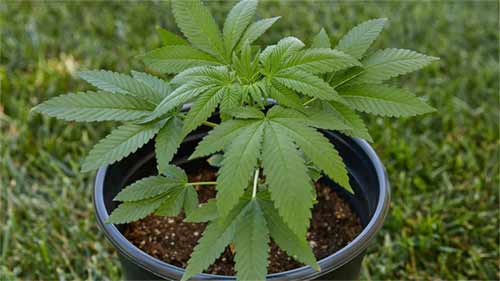
Purple Kush Strain
Prepare to be captivated by the enigmatic Purple Kush strain, a pure indica cultivar known for its vibrant color, earthy and sweet flavors, and deeply relaxing effects. Dive into the world of this fascinating strain as we explore its origins, appearance, unique terpene profile, and the multitude of recreational and medical benefits it offers. With its intriguing history and hardy nature, it’s no wonder Purple Kush has become a favorite among cannabis connoisseurs and cultivators alike.
Table of Contents
Short Summary
- Purple Kush is a pure indica strain with origins in the Hindu Kush mountains, offering high THC levels and unique flavor profile.
- Its therapeutic effects make it popular among recreational and medical users alike, while its resilience makes it an ideal choice for indoor cultivation.
- It shares characteristics with related strains such as Grape Ape, Granddaddy Purple, and Obama Kush which also offer pain relieving benefits.
Purple Kush Facts
Strain (Indica/Sativa): Pure Indica
Flavor/Smell: Grape, Violet, Lavendar
Terpenes: Myrcene, Pinene, Caryphyllene
Effects: Sleepy, Hungry, Giggly
CBD %: 0%
THC %: 22%
Pack Lineage: The pack lineage of Purple Kush is Hindu Kush and Purple Afghani
Appearance: Its dark, potent buds can almost look black at times, especially in flower that was subjected to cold growing conditions.
Grow: Moderate to grow
Plant Size: Average
Vegetative Stage: 4-8 weeks
Flowering Time: 8-10 weeks
Amount: Indoor 15oz/m2 Outdoor 9oz/Plant
The Origins and Genetics of Purple Kush
Purple Kush’s alluring genetic connections can be traced back to the rugged Hindu Kush mountains of Afghanistan, where it was crossed with the flavorful Purple Afghani strain to create this pure indica masterpiece. As a 100% indica strain, Purple Kush boasts notable levels of THC and a diverse terpene profile that contributes to its unique characteristics.
The result is a cannabis strain that is both visually stunning and potent in its effects, making it a sought-after choice for medical marijuana patients and recreational users alike.
The Hindu Kush Mountains
The Hindu Kush mountains, a grand mountain system in Central Asia, hold the key to Purple Kush’s intriguing origins. This majestic mountain range traverses Afghanistan, extending into northern Pakistan and Tajikistan, and has played a significant role in the development of Purple Kush.
Historically, the Hindu Kush mountains served as a gateway for invasions of the Indian subcontinent, making them a melting pot of various cannabis strains, including the legendary Hindu Kush strain and its popular derivative, Purple Hindu Kush.
Purple Afghani
The enchanting Purple Afghani, a landrace strain crossed with Afghani #1 and Purple Kush, lends its unique color and flavor profile to Purple Kush. Known for its high THC content and distinctive berry and spice flavors, Purple Afghani is an indica-dominant hybrid strain that is cherished among cannabis enthusiasts.
The presence of anthocyanins in Purple Afghani gives it a deep purple hue, adding to the visual appeal of Purple Kush.
Appearance and Flavor Profile
Purple Kush features dense buds with green and purple leaves, a visual testament to the presence of anthocyanins activated in cold temperatures. This captivating coloration is accompanied by a sweet, fruity, and hash-like aroma and taste, making it a sensory delight for cannabis connoisseurs. The orange pistils further enhance the visual appeal of this strain.
Upon combustion, Purple Kush’s flowers emit a sugary grape-like taste, reminiscent of sweet dessert wine or purple cough syrup, truly setting it apart from other strains.
Anthocyanins and Coloration
The secret behind Purple Kush’s mesmerizing coloration lies in the presence of anthocyanins, chemical components responsible for its purple hue. These anthocyanins are more pronounced in cooler climates, making the cultivation environment a significant factor in the final appearance of the strain.
The colder the temperature, the more vibrant the purple color becomes, adding an aura of mystique to this already captivating cultivar.
Aroma and Taste
Delight your senses with Purple Kush’s complex aroma and taste. Earthy, sweet, and fruity notes intermingle, evoking memories of ripe berries and grapes. This unique combination of flavors is a testament to the strain’s genetic origins, with users often describing its scent as earthy, woody, spicy, and even herbal.
The delectable flavor profile of Purple Kush is an experience that lingers, making it a favorite for those who appreciate both taste and potency in their cannabis.
Cannabinoid and Terpene Profile
Purple Kush’s cannabinoid and terpene profile is as unique as its appearance and flavor. With THC content ranging from 17% to a staggering 27%, this strain packs a powerful punch for both recreational and medicinal users. CBD and CBG levels are comparatively low, sitting at 0.1% and 0.3%, respectively.
The terpene profile of Purple Kush is rich and varied, featuring the likes of beta-caryophyllene, humulene, linalool, myrcene, and pinene. These terpenes work together to create a unique flavor and aroma that is both sweet and earthy. They also contribute to the strain’s therapeutic effects, making it a great choice.
THC Content
The potency of Purple Kush is not to be underestimated, with some phenotypes boasting THC content of up to 30%. This high THC level contributes to the strain’s powerful effects, making it a popular choice for those seeking a potent and relaxing experience.
As a pure indica, Purple Kush’s THC content plays a significant role in its effectiveness for both recreational and medicinal use.
CBD and CBG Levels
While Purple Kush’s THC content is undeniably impressive, its CBD and CBG levels are relatively low at 0.1% and 0.3%, respectively. This means that the effects of these cannabinoids are not as prominent as in other strains, with the focus primarily on Purple Kush’s high THC content and its accompanying effects.
The THC content of Purple Kush is what makes it stand out from other strains, as it can reach up to 20%. This high THC content is responsible for the strain’s strong psychoactive effects, which can be both energizing and relaxing.
Dominant Terpenes
The dominant terpenes in Purple Kush play a crucial role in its unique aroma, flavor, and potential therapeutic effects. Beta-caryophyllene, humulene, linalool, myrcene, and pinene all contribute to the strain’s complex profile, offering a distinctive sensory experience.
These terpenes may also provide potential therapeutic benefits, with myrcene and beta-caryophyllene possibly aiding in the relief of headaches and migraines, while pinene may help alleviate stress and tension.
Effects and Benefits of Purple Kush
Purple Kush’s popularity is not solely due to its unique appearance and flavor; its potent effects and versatile benefits make it a top choice for both recreational and medical users. Known for its deeply relaxing and sedative effects, Purple Kush is ideal for those seeking relief from insomnia, chronic pain, and anxiety, as well as for those simply looking to unwind after a long day.
This strain’s powerful effects, combined with its unique sensory experience, make it a sought-after option among cannabis enthusiasts.
Recreational Use
Recreational users are drawn to Purple Kush for its calming and psychedelic effects, which can lead to laughter, hunger, and deep sleep. Its potent, couch-locking properties make it a popular choice for evening use, when relaxation and unwinding are the primary goals.
With its unique flavor profile and powerful effects, Purple Kush has solidified its status as a favorite among recreational users.
Cultivation Tips for Purple Kush
Growing Purple Kush can be moderately challenging, but its resilience and mold resistance make it a rewarding endeavor for cultivators. Ideally suited for indoor cultivation, growers can better control the environmental factors that contribute to the strain’s vibrant coloration and potent effects.
Purple Kush’s hardiness and natural resistance to mold and pests make it a reliable option for growers looking to cultivate a unique and potent strain.
Indoor vs. Outdoor Growth
While Purple Kush can be grown outdoors, indoor cultivation is highly recommended due to the strain’s low stature and bushy figure. Indoor growth allows for more precise control over the environment, ensuring optimal results for both appearance and potency.
If outdoor growth is preferred, a dry, sunny environment is crucial for the strain to thrive.
Mold and Pest Resistance
One of the key advantages of growing Purple Kush is its natural mold and pest resistance, making it a sturdy and reliable strain for cultivation. This resistance allows growers to focus on optimizing growing conditions and maximizing yield, without the constant worry of mold and pest infestations.
By taking advantage of Purple Kush’s natural hardiness, growers can cultivate a potent and visually stunning strain with relative ease.
Related Strains and Varieties
Purple Kush shares its remarkable characteristics with several related strains, including Grape Ape, Granddaddy Purple, and Obama Kush. These strains are also known for their pain-relieving and sedative effects, making them popular choices among both recreational and medical users.
By exploring the world of these related strains, one can gain a deeper appreciation for the unique qualities that make Purple Kush such a prized cultivar.
Summary
In summary, Purple Kush is a potent, pure indica strain with a unique appearance, flavor, and aroma, offering both recreational and medical benefits. Its origins in the Hindu Kush mountains and connection to Purple Afghani contribute to its distinctive characteristics, while its natural mold and pest resistance make it a popular choice for growers.
Whether you’re a seasoned cannabis connoisseur or a newcomer to the world of indica strains, Purple Kush offers a sensory experience unlike any other.
Frequently Asked Questions
Explore answers to frequently asked questions about Purple Kush, including its flowering time, terpene profiles, comparisons to other strains, and its unique characteristics and appearance.
Gain a deeper understanding of this captivating strain and discover why it continues to captivate cannabis enthusiasts and cultivators alike.
What is the flowering time for the Purple Kush strain?
Answer: The flowering time for Purple Kush typically falls around 8 weeks, although this can vary depending on environmental factors such as temperature, humidity, and light.
By carefully managing these conditions, growers can optimize the flowering time and yield of their Purple Kush plants.
Does Purple Kush have any unique terpene profiles?
Yes, Purple Kush boasts a unique terpene profile that includes beta-caryophyllene, humulene, linalool, myrcene, and pinene. These terpenes contribute to the strain’s distinctive aroma and flavor, as well as its potential therapeutic effects.
These terpenes are responsible for the strain’s unique flavor and aroma, as well as its potential therapeutic effects. They include beta-caryophyllene, humulene, linalool, myrcene, and pinene.
How does Purple Kush compare to other cannabis strains?
Purple Kush stands out from other cannabis strains due to its pure indica genetics, vibrant coloration, and potent effects. Its high THC content, unique terpene profile, and visually striking appearance make the purple kush cannabis strain a popular choice among recreational users. In fact, purple kush makes for an exceptional experience that keeps users coming back for more.
It is known for its deep purple buds and bright orange hairs, which give it a distinct look that is hard to miss. The aroma is sweet and earthy, with hints of berry and spice. The flavor is good.
What are the characteristics and appearance of Purple Kush?
Answer: Purple Kush is characterized by dense buds with green and purple leaves, covered in sticky resin. Its coloration is a result of anthocyanins activated in cold temperatures.
The strain has a sweet, fruity, and hash-like aroma and taste, offering a unique sensory experience for cannabis connoisseurs.
